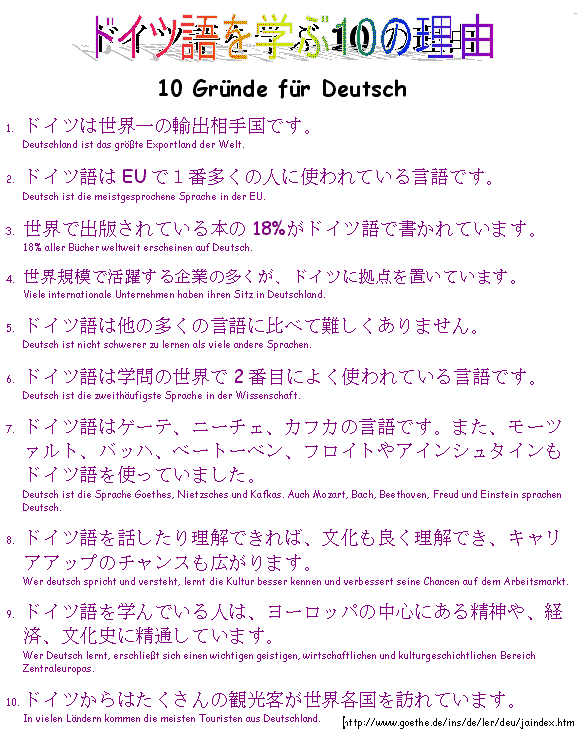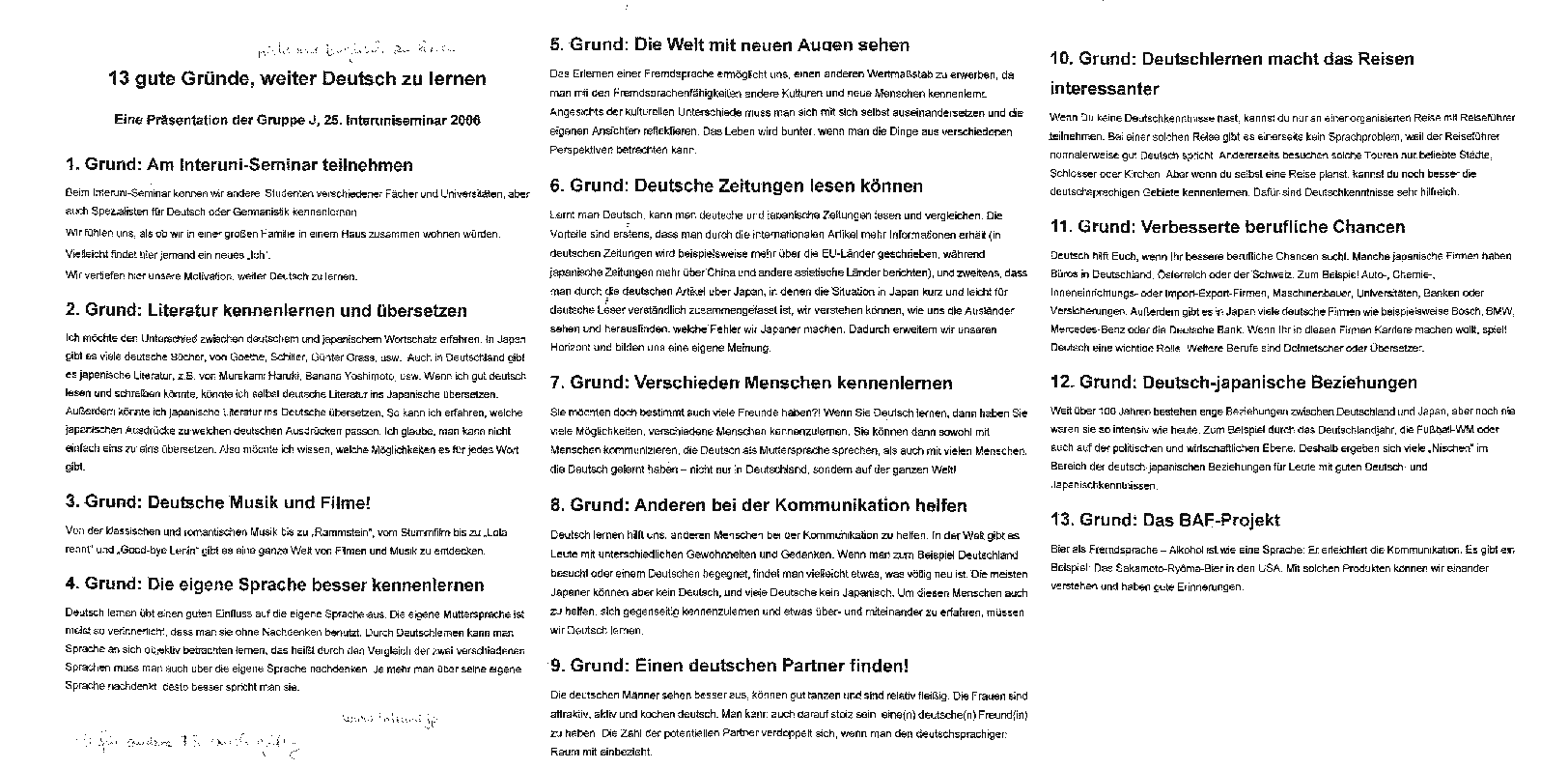Illustration 12. Article from the April 19 2007 Daily Yomiuri about Richard Gere in New Delhi

Learning more than English as a foreign language:
by Martina Gunske von Kölln (Fukushima University)
|

[ p. 32 ]

Few, if any, of these reasons are compelling to most Japanese undergraduates. Therefore it is necessary to look for other reasons to attract our students. The next list is written by students participating in an inter-university seminar for German studies. Please note that they were students learning German language and culture in German speaking countries voluntarily, refer to Illustration 14 for details.No. 7: "German is the language of Goethe, Nietzsche and Kafka as well as of Mozart, Bach, Beethoven, Freud and Einstein." No. 6: "German is the second most frequent language used in the world of science." No. 1: "Germany is the largest exporting-country in the world." No. 2: "German is the most spoken language in the EU." No. 3: "18% of all books in the whole world are written in German."
[ p. 33 ]

[ p. 34 ]
Illustration 15. "Sushibomer Pass" for the FIFA-Soccer World-Cup Event (2006, German Culture Center, Tokyo, p. 68)  |
|
[ p. 35 ]

| "The needs of learners in Asia differ from those in Europe or Africa. The wishes and interests of our learners now are not the same as learners we taught five years ago." |
| ". . . many Japanese students are scared of working with German textbooks which are written only in the target language without any Japanese explanations." |
[ p. 36 ]
Readers who are interested in "3+" languages can contact and join the OLE SIG group,
which is coordinated by Rudolf Reinelt of Ehime University.
|
| Article: Part 1 | Article: Part 2 | Appendix |
[ p. 37 ]